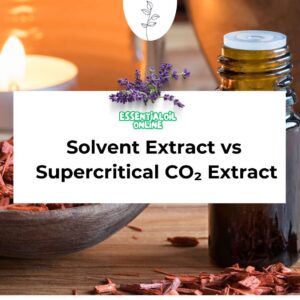Best Essential Oils for Soap Making
Why Essential Oils Are Tricky (Yet Rewarding) in Soap Making
Anyone who has ever made a batch of soap knows that getting the scent right can be one of the most challenging parts of the process. Essential oils smell incredible straight from the bottle, bright citrus, warm woods, fresh herbs, but the moment they meet lye, heat, and weeks of curing time, the fragrance can change dramatically. Some fade, some morph, and some disappear almost entirely.
And yet, when you find essential oils that do hold up in soap, the results are worth every bit of experimentation. A well-scented bar made with the right oils smells naturally beautiful, ages well, and feels far more artisan than anything with synthetic fragrance.
The real reason essential oils behave unpredictably in soap comes down to chemistry. Soapmaking involves heat spikes, saponification, and evaporation — all of which affect how aromatic compounds survive. Lighter oils, like lemon or bergamot, may smell amazing at first but tend to evaporate quickly. Stronger, heavier oils like cedarwood, patchouli, and vetiver dig in and linger throughout the cure because their aromatic molecules don’t break down as easily.
This guide focuses on exactly that: which essential oils can handle the heat, which ones give you a reliable long-lasting aroma, and how to pair them to create natural soaps that smell incredible from the first wash to the very last sliver. Whether you’re making cold process bars, hot process soap, or melt-and-pour creations, understanding the behavior of each scent family will save you time, ingredients, and plenty of “why did this fade?” frustration.
Soapmaking is part craft, part chemistry, and part patience. With the right essential oils, you can create bars that not only look beautiful but carry the kind of aroma that makes people ask, “What scent is this?” — weeks after curing.
Understanding Heat Stability: Why Some Essential Oils Survive Soapmaking Better Than Others
If soapmaking has taught crafters anything, it’s that scent does not behave the same way inside a bar as it does in the bottle. You might start with a bright, beautiful essential oil blend, only to find that once your soap cures, the fragrance has softened, shifted, or vanished. This isn’t bad technique — it’s simply the nature of how essential oils interact with the chemistry of soap.
Every essential oil contains aromatic molecules that evaporate at different speeds. Some are extremely volatile, meaning they lift into the air quickly, which is wonderful for diffusers but challenging in soapmaking. These are the citrus and mint oils that make your kitchen smell incredible the moment you open the bottle — and they’re also the first to be lost during saponification.
Soapmaking involves several factors that affect scent retention:
• Heat:
Cold process soap may look gentle, but internally the batter can hit unexpectedly high temperatures during “gel phase.” Hot process soap reaches even higher temperatures more consistently. Light aromatic compounds simply don’t survive this spike — they burn off before the soap hardens.
• Alkalinity:
Lye (sodium hydroxide) is highly alkaline, and the moment it mixes with oils, the pH increases dramatically. Some essential oils tolerate alkalinity well, while others break down or transform into a different-smelling molecule.
• Cure Time:
Even once the soap is out of the mold, it still needs weeks to cure. During this time, the aroma continues to evaporate. Oils with lighter top notes fade faster; oils with deep, resinous, or woody bases tend to hold strong.
This is why soapmakers often notice that some scents seem “made for soap.”
Cedarwood, patchouli, vetiver, and spice oils don’t just survive the process — they often improve after curing, settling into a richer, smoother aroma.
On the other hand, oils like lemon, lime, and grapefruit smell fantastic in air or lotions, but they simply evaporate too quickly to stay present through a four- to six-week cure without help from a fixative or base note anchor.
Understanding this behavior — volatility, heat stability, and how aromatic molecules react to high pH — is the foundation for creating soaps with long-lasting, natural scents. Once you know which oils can handle the journey from batter to cure, soapmaking becomes far more predictable and enjoyable.
Best Essential Oils for Soap Making
Lavender — The Most Reliable Floral for Soap
If there is one essential oil that rarely disappoints in cold process soap, it’s lavender. Lavender maintains its character through the heat and alkalinity of saponification, and it tends to mellow rather than fade. In fact, many soap makers find that lavender improves during cure, becoming smoother and more rounded after a few weeks. It also blends exceptionally well with citrus, herbs, and woods, making it one of the most versatile scent ingredients in natural soap.
Cedarwood — Warm, Balanced, and Exceptionally Stable
Cedarwood is one of those oils that almost seems made for soapmaking. It brings a warm, dry woodiness that blends well with nearly every scent family — citrus, florals, herbs, spices, and even resins. In cold process soap, cedarwood holds onto its fragrance beautifully, and even after weeks of curing, it maintains its character. Because it isn’t overpowering, cedarwood makes an excellent “anchor” oil — a base that helps softer aromas stick around.
Geranium — A Rosy Floral That Stays Strong
Geranium is another standout performer. While it doesn’t smell exactly like rose, it offers a fresh, rosy sweetness with a touch of green brightness. It holds up through the curing process far better than delicate rose oils or absolutes, making it an excellent choice for anyone wanting a natural floral profile without worrying about scent fade. Used alone, geranium is expressive and pleasant. Used in blends, it elevates florals, brightens woods, and balances citrus.
Palmarosa — The Quiet Floral Workhorse
Palmarosa doesn’t always get the attention it deserves, but it’s incredibly dependable in soap. Its mild, rosy-herbal aroma is soft and clean, and it anchors well with lavender, bergamot, or cedarwood. Because it behaves well in high pH environments, it helps round out blends that might otherwise feel too bright or sharp.
Jasmine & Rose Absolutes — Beautiful but Delicate
While jasmine absolute and rose absolute can be used in soap, they’re delicate and expensive — and they can soften during saponification. Most soap makers blend them in small amounts with more stable florals or woody anchors to help preserve the aroma. They contribute wonderful depth when used mindfully, but they are rarely used alone because of their fragility in high pH environments.
Eucalyptus — Cool, Crisp, and Remarkably Persistent
Eucalyptus has a clean, airy sharpness that cuts through heavier notes and brightens a blend instantly. Despite being a lighter oil compared to woods, eucalyptus holds up impressively well in cold process soap. After curing, it keeps much of its crisp “green” aroma. It’s especially popular for spa-style soaps or bars intended to feel refreshing and modern.
Peppermint — Bright, Fresh, and Surprisingly Long-Lasting
Peppermint essential oil behaves much better in soap than its citrus counterparts. While technically a “top note,” peppermint contains strong cooling aromatic components that don’t evaporate as quickly as other light oils. In soap, it remains sharp, energizing, and clean-smelling throughout the cure.
Conclusion
When it comes to natural soapmaking, fragrance is one of the most rewarding parts of the craft — but it’s also one of the most misunderstood. Many beginners assume that the essential oils they love in the bottle will smell exactly the same in their soap. In reality, cold process, hot process, and melt-and-pour all treat essential oils differently. Heat, pH, cure time, and volatility all influence how a scent survives.
The good news is this: once you understand how different oils behave, creating long-lasting natural scents becomes far more predictable. Woody, resinous, and many herbal essential oils remain strong and steady. Florals can shine when chosen carefully. Even citrus scents — the most fragile category — can be enjoyed when supported with anchors or used in the right method.




